Abstract
Twenty-five cases of peroneal muscular atrophy with pyramidal features from 15 families are described. This disorder has been referred to as hereditary motor and sensory neuropathy (HMSN) type V by Dyck. Onset was usually in the first two decades of life with difficulty in walking. The clinical syndrome superficially resembled that of HMSN types I and II with distal wasting and weakness involving the legs more than the arms. The tendon reflexes in the upper limbs and at the knee tended to be normal or increased but the ankle jerks were often absent. The plantar responses were extensor in 22 patients, absent in two and flexor in one. Increased tone and weakness in the proximal lower limb muscles were found in about 30% of cases. Mean motor nerve conduction velocity was lower than in normal controls and sensory nerve action potentials were reduced in amplitude or absent in two thirds of the patients studied. Inheritance was autosomal dominant in the majority of families. The disorder was slowly progressive but did not lead to severe disability.
Full text
PDF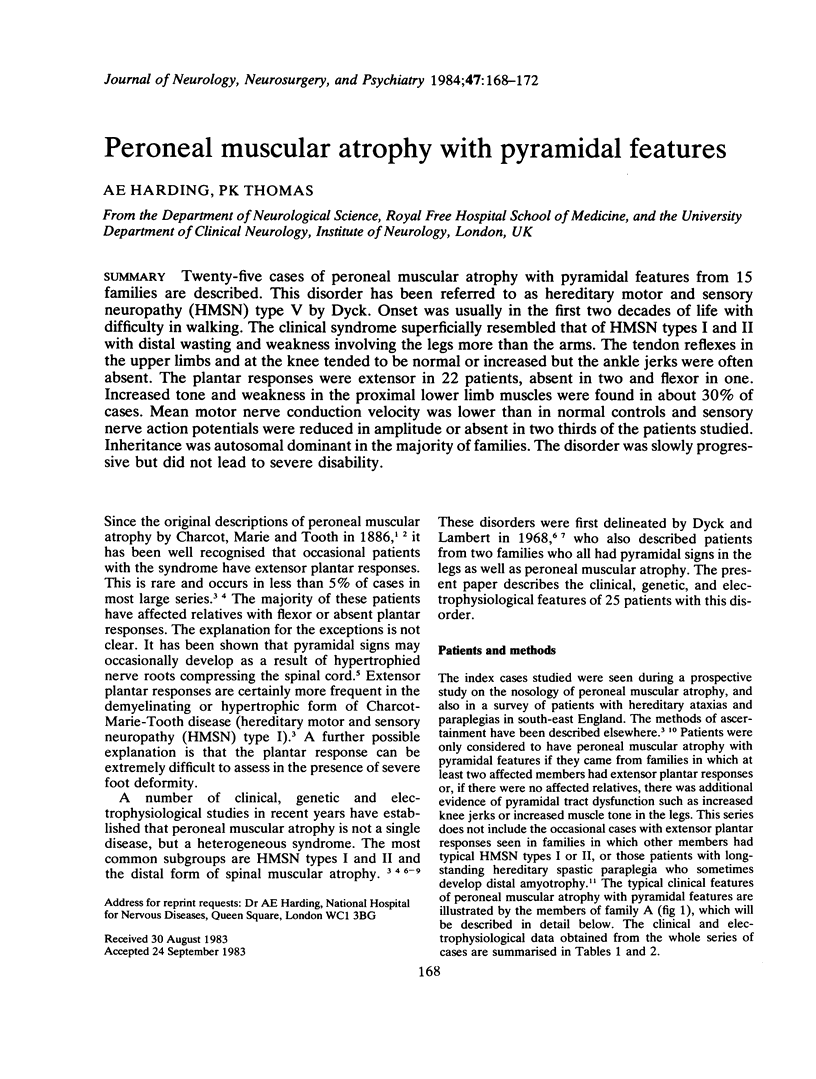
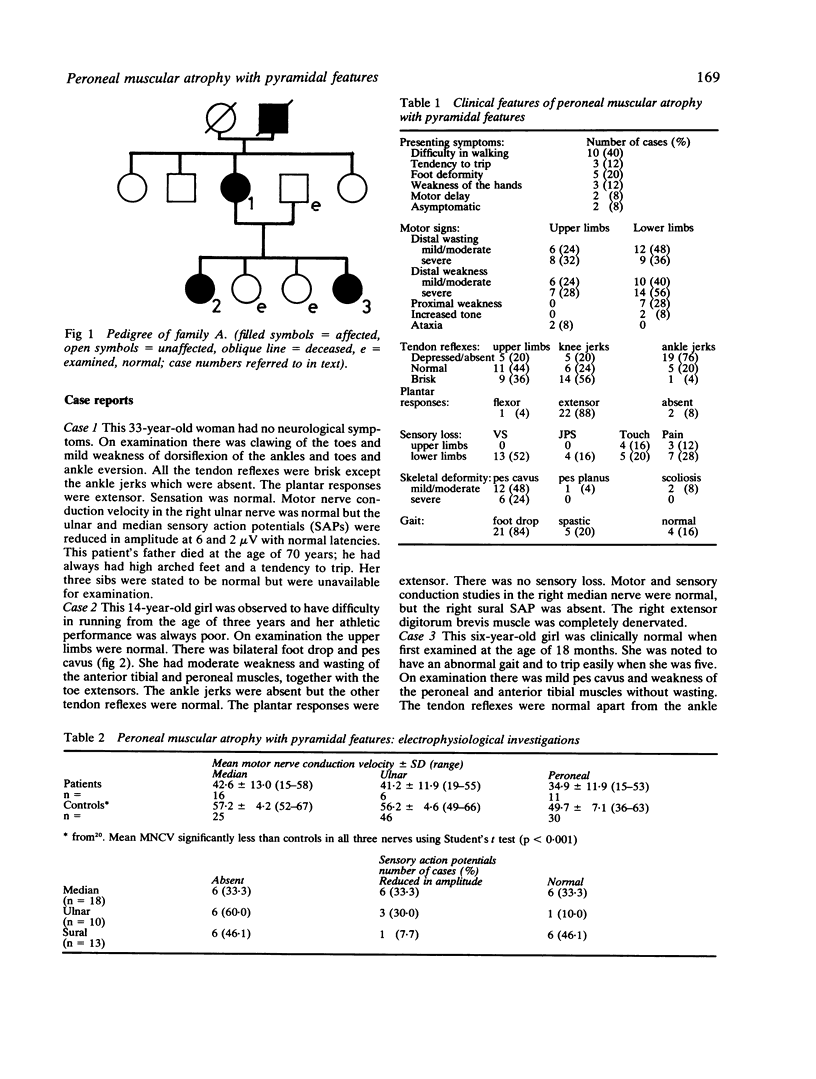
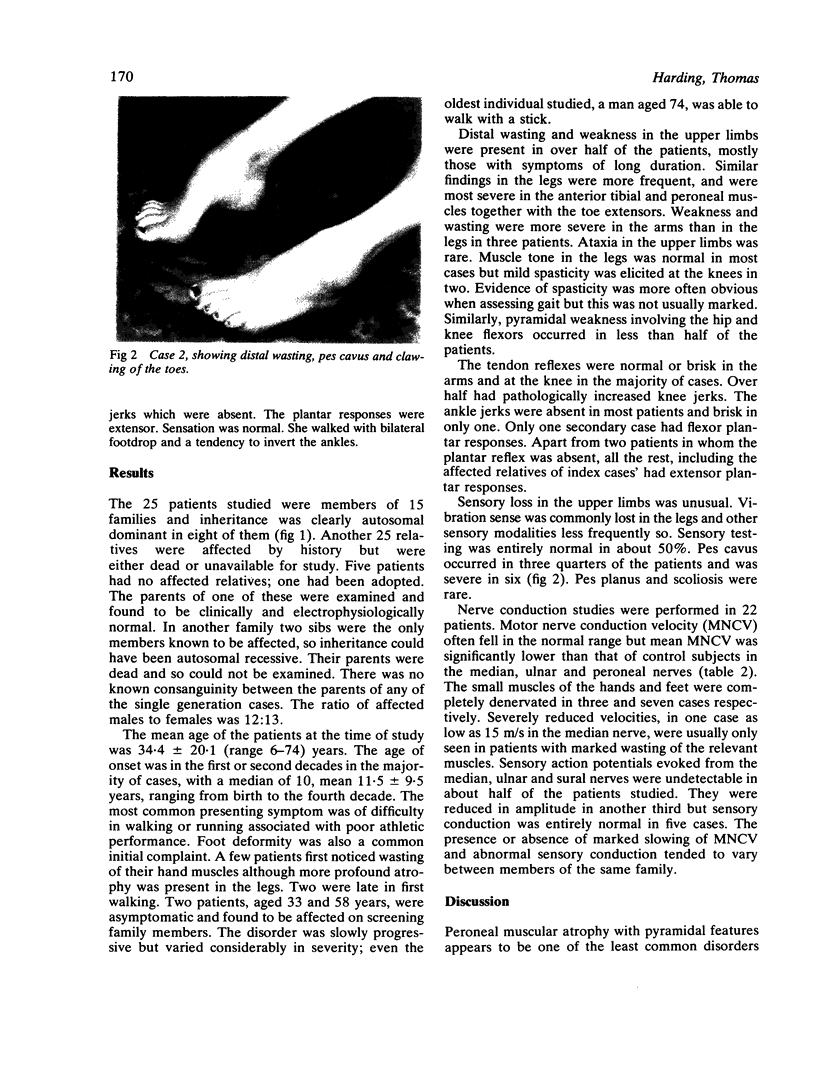
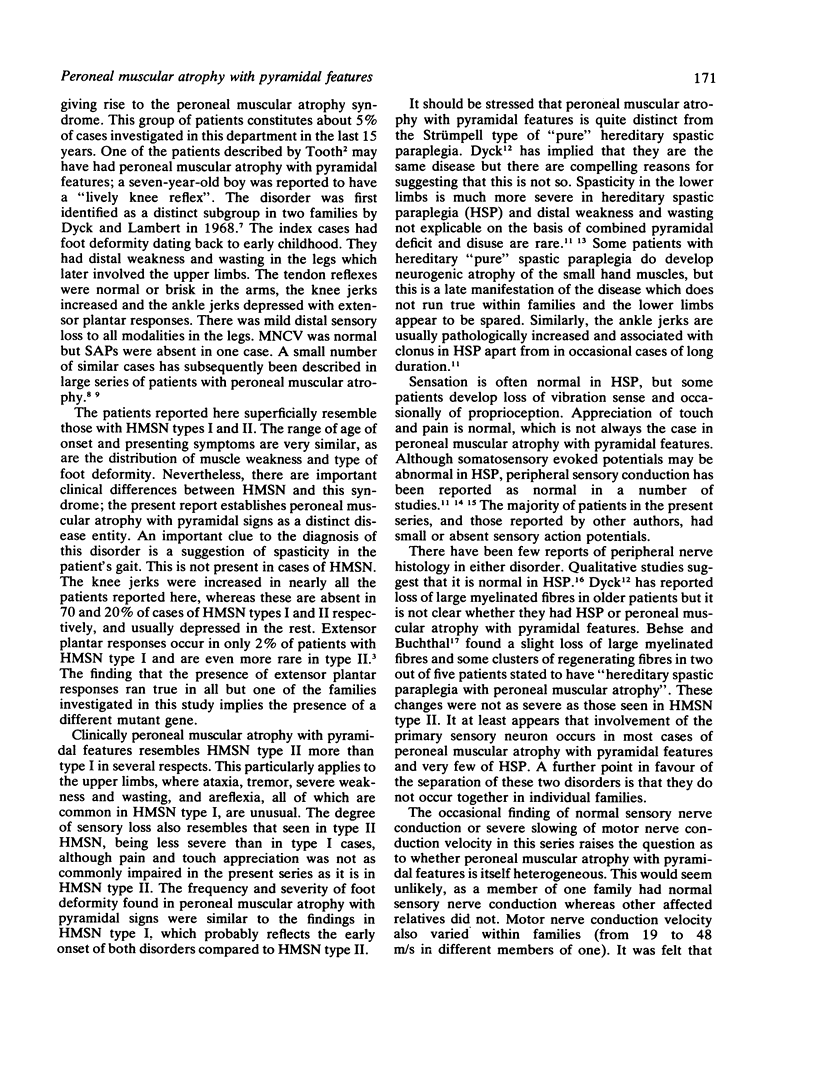
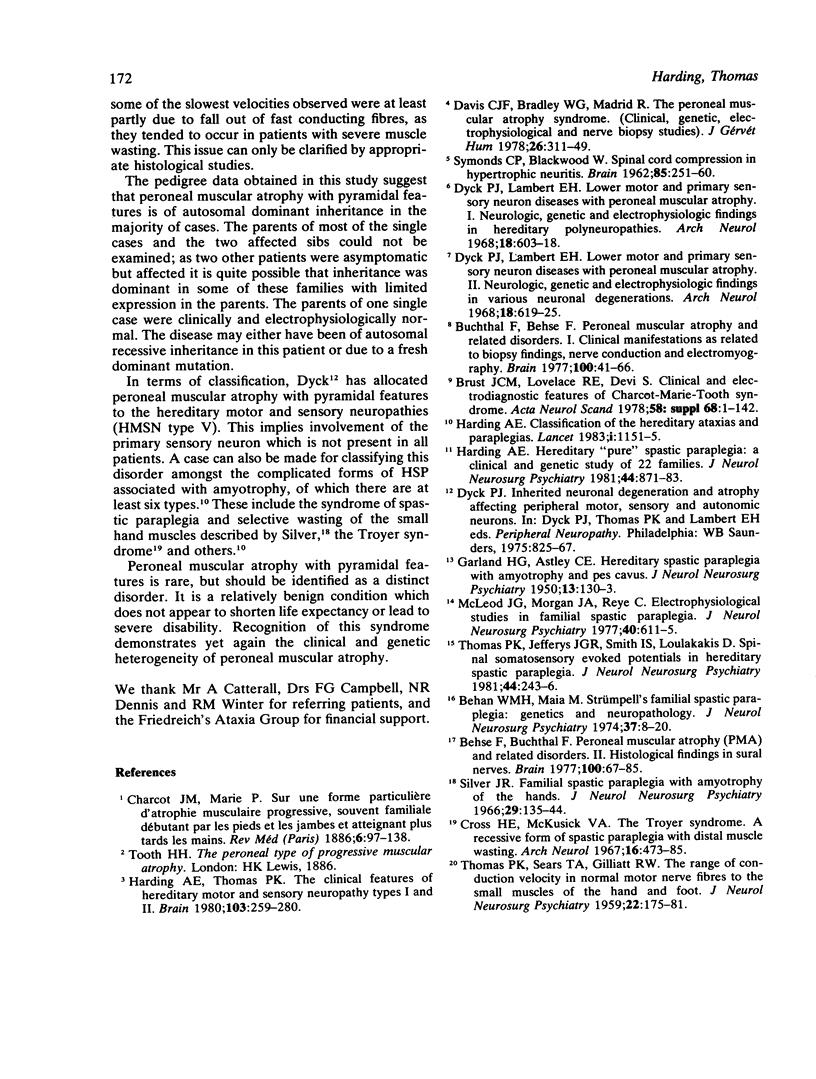
Images in this article
Selected References
These references are in PubMed. This may not be the complete list of references from this article.
- Behan W. M., Maia M. Strümpell's familial spastic paraplegia: genetics and neuropathology. J Neurol Neurosurg Psychiatry. 1974 Jan;37(1):8–20. doi: 10.1136/jnnp.37.1.8. [DOI] [PMC free article] [PubMed] [Google Scholar]
- Behse F., Buchthal F. Peroneal muscular atrophy (PMA) and related disorders. II. Histological findings in sural nerves. Brain. 1977 Mar;100(Pt 1):67–85. doi: 10.1093/brain/100.1.67. [DOI] [PubMed] [Google Scholar]
- Brust J. C., Lovelace R. E., Devi S. Clinical and electrodiagnostic features of Charcot-Marie-Tooth syndrome. Acta Neurol Scand Suppl. 1978;68:1–142. [PubMed] [Google Scholar]
- Buchthal F., Behse F. Peroneal muscular atrophy (PMA) and related disorders. I. Clinical manifestations as related to biopsy findings, nerve conduction and electromyography. Brain. 1977 Mar;100(Pt 1):41–66. doi: 10.1093/brain/100.1.41. [DOI] [PubMed] [Google Scholar]
- Cross H. E., McKusick V. A. The Troyer syndrome. A recessive form of spastic paraplegia with distal muscle wasting. Arch Neurol. 1967 May;16(5):473–485. doi: 10.1001/archneur.1967.00470230025003. [DOI] [PubMed] [Google Scholar]
- Davis C. J., Bradley W. G., Madrid R. The peroneal muscular atrophy syndrome: clinical, genetic, electrophysiological and nerve biopsy studies. I. Clinical, genetic and electrophysiological findings and classification. J Genet Hum. 1978 Dec;26(4):311–349. [PubMed] [Google Scholar]
- Dyck P. J., Lambert E. H. Lower motor and primary sensory neuron diseases with peroneal muscular atrophy. I. Neurologic, genetic, and electrophysiologic findings in hereditary polyneuropathies. Arch Neurol. 1968 Jun;18(6):603–618. doi: 10.1001/archneur.1968.00470360025002. [DOI] [PubMed] [Google Scholar]
- Dyck P. J., Lambert E. H. Lower motor and primary sensory neuron diseases with peroneal muscular atrophy. II. Neurologic, genetic, and electrophysiologic findings in various neuronal degenerations. Arch Neurol. 1968 Jun;18(6):619–625. doi: 10.1001/archneur.1968.00470360041003. [DOI] [PubMed] [Google Scholar]
- GARLAND H. G., ASTLEY C. E. Hereditary spastic paraplegia with amyotrophy and pes cavus. J Neurol Neurosurg Psychiatry. 1950 May;13(2):130–133. doi: 10.1136/jnnp.13.2.130. [DOI] [PMC free article] [PubMed] [Google Scholar]
- Harding A. E. Classification of the hereditary ataxias and paraplegias. Lancet. 1983 May 21;1(8334):1151–1155. doi: 10.1016/s0140-6736(83)92879-9. [DOI] [PubMed] [Google Scholar]
- Harding A. E. Hereditary "pure" spastic paraplegia: a clinical and genetic study of 22 families. J Neurol Neurosurg Psychiatry. 1981 Oct;44(10):871–883. doi: 10.1136/jnnp.44.10.871. [DOI] [PMC free article] [PubMed] [Google Scholar]
- Harding A. E., Thomas P. K. The clinical features of hereditary motor and sensory neuropathy types I and II. Brain. 1980 Jun;103(2):259–280. doi: 10.1093/brain/103.2.259. [DOI] [PubMed] [Google Scholar]
- McLeod J. G., Morgan J. A., Reye C. Electrophysiological studies in familial spastic paraplegia. J Neurol Neurosurg Psychiatry. 1977 Jun;40(6):611–615. doi: 10.1136/jnnp.40.6.611. [DOI] [PMC free article] [PubMed] [Google Scholar]
- THOMAS P. K., SEARS T. A., GILLIATT R. W. The range of conduction velocity in normal motor nerve fibers to the small muscles of the hand and foot. J Neurol Neurosurg Psychiatry. 1959 Aug;22:175–181. doi: 10.1136/jnnp.22.3.175. [DOI] [PMC free article] [PubMed] [Google Scholar]
- Thomas P. K., Jefferys J. G., Smith I. S., Loulakakis D. Spinal somatosensory evoked potentials in hereditary spastic paraplegia. J Neurol Neurosurg Psychiatry. 1981 Mar;44(3):243–246. doi: 10.1136/jnnp.44.3.243. [DOI] [PMC free article] [PubMed] [Google Scholar]



